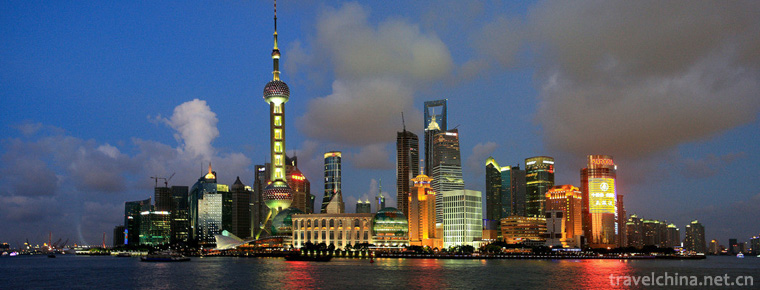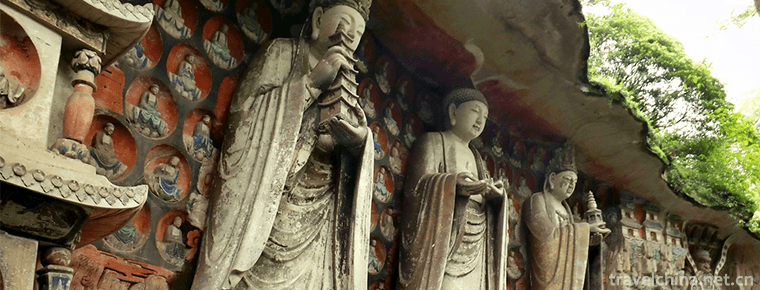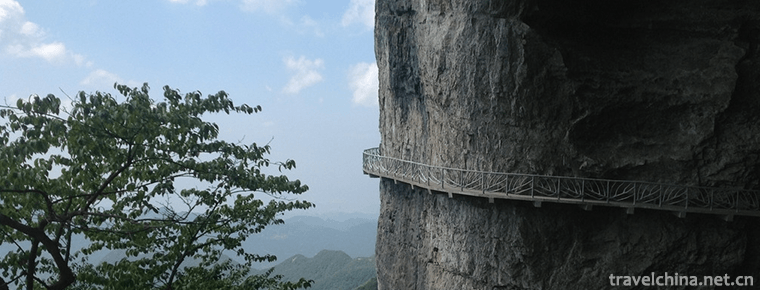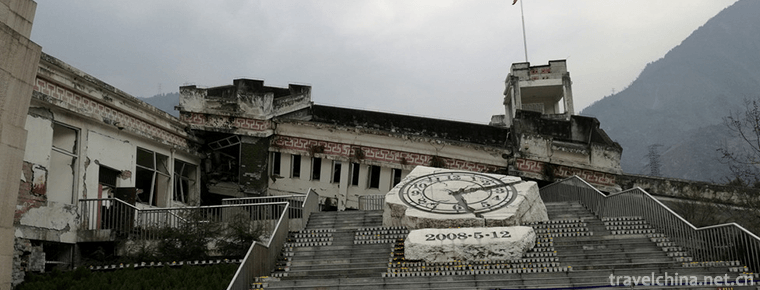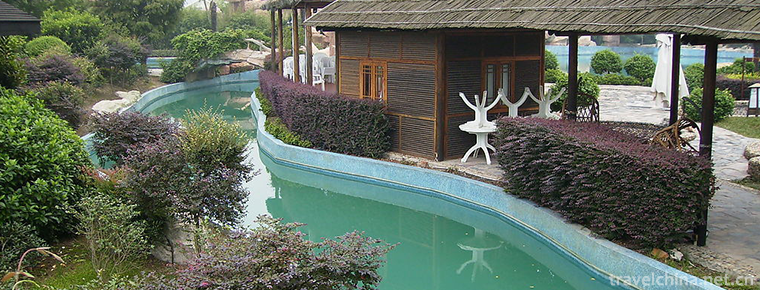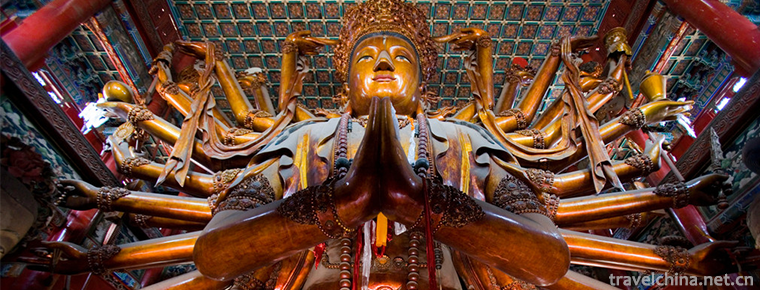Wawu mountain
Wawu mountain
Wawu Mountain National Forest Park is under the administration of Hongya County, Meishan City, along the western edge of Sichuan Basin. It is 180 km away from Chengdu and covers an area of 1.05 million mu. It is composed of a series of scenic spots, such as the Wawu mountain original forest adventure scenic spot, Yuping artificial forest Sea resort, Bamianshan ancient hunting area, etc. The air is fresh, the visibility is high, just like fairyland, enchantment is its biggest charm. Wawu mountain, a famous historical and cultural mountain in China, is one of the birthplaces of Taoism. It is known as "the hometown of Chinese pigeon flowers" and "the kingdom of azaleas in the world". At present, it has won the titles of national key eco-tourism scenic spot, top ten model units of National Forest Park, national civilized Forest Park, provincial nature reserve, Sichuan forest health care demonstration base, pilot construction unit of China's forest health preservation, China's forest oxygen bar, etc.
Wawu mountain, also known as "Shu mountain", is 1154-2830 meters above sea level, with an area of 1500 mu on the top of the mountain platform. As early as the Tang and Song Dynasties, Wawu mountain and Emei Mountain were called "two wonders of Sichuan".
brief introduction
Wawu mountain is a comprehensive large-scale national forest park with forest tourism, sightseeing, summer vacation, hunting for the ancient, adventure and scientific investigation as its main guests. Since it was approved as a national forest park by the Ministry of forestry in March 1993, it has further accelerated the development process of the whole park. Wawu Mountain National Forest Park, with an area of 1.05 million mu, is the largest forest park in China.
Wawu Mountain National Forest Park is mainly composed of Yuping artificial forest Sea resort area, Bamianshan ancient hunting scenic spot and core scenic spot Wawu mountain primeval forest adventure scenic spot. The park is based on the original forest landscape, with more than 3600 plants. The total number of angiosperms accounts for 60% of the world's angiosperms. It is known as the cradle and differentiation center of angiosperms in the world. The national first-class protected plants include Davidia involucrata, hemlock, hemlock, Taxus, etc. There are more than 460 kinds of wild animals, including 6 kinds of first-class protected animals such as panda, antelope, black cheekbone and green tailed pheasant, and 17 kinds of second-class protected animals such as little panda and monkey.
In 1996, Wawushan passenger ropeway was put into operation. In 1997, it was rated as one of the top ten model units of national forest parks. In 1999, it was listed as one of the three national forest parks designated by the State Forestry Administration. At present, the scenic spot has a daily reception capacity of 1500 people and an annual reception capacity of 50000 person times, which can meet the needs of people from all walks of life and all kinds of tourists at different levels. It is an ideal place for people to carry out eco-tourism, leisure and vacation, popular science research, exploration and exploration, photography and sketching, holding meetings and patriotic education.
geographical position
Wawu mountain is the core scenic spot of Wawu Mountain National Forest Park. It is a famous historical and cultural mountain in China, the birthplace of Taoism, the hometown of Chinese Pigeon Flower and the kingdom of azalea in the world. It is located in Hongya County, Meishan City, Sichuan Basin, 180 km away from Chengdu, covering an area of 1.05 million mu. It is located in the original forest adventure scenic area of Wawu mountain, the Yuping artificial forest Sea resort and Bamian Mountain to explore the ancient Range Rover area and other series of scenic spots.
History of development
Wawu mountain has a long history of Taoist culture, which is the birthplace of Taoism. At the end of the spring and Autumn period, Lao Jun went to the west to visit the worship of Qing Qiang in Wawu mountain. At the end of the Han Dynasty, Zhang Daoling went to the foot of the mountain to preach and create religion, leaving the tablet of Zhang Daoling to create the "wudoumi" religion. In the annals of Huayang, Zhang Ling of Pei state learned Taoism from the mountain of crane Ming in Shu, and made calligraphy. Therefore, it was called "rice education" and "wudoumi religion". At the end of Yuan Dynasty and the beginning of Ming Dynasty, Zhang Sanfeng went to Wawu mountain to cultivate and create Wushan sect. Later, he was falsely labeled as "demon mountain" by the Ming Dynasty and banned. However, there were still a large number of pilgrims, which were comparable to Emei Mountain, and were called sister mountain. The ancient Qing and Qiang culture still exists. As far back as the end of the Western Zhou Dynasty, Wawu mountain was developed. The God of Qingyi, the founding state of Shu state, was buried in Wawu mountain. The ancient Qiang people built large-scale temples such as Chuanzhu, Shengde, Boshan, Yifu and Wan'an to worship the God of Qingyi and become a famous sacrifice of Qingqiang.
From Zhou and Qin Dynasties to Ming and Qing Dynasties, many poets and poets visited Wawu mountain, such as Deng Tong, Pizhi, Zhang Daoling, Zhuge Liang, Ge Hong, cen Shen, Su Shi, Lu You, Yang Sheng'an, he Shaoji, etc. have been associated with Wawu mountain, leaving many well-known works and beautiful legends. There are also many scientists and cultural celebrities who visit Wawu mountain and leave extremely precious records.
Main attractions
Yanv Lake
Green mountains and green waters raise beautiful women. The beauty of elegant women is famous in Bashu. Yanv lake, also known as Wawushan reservoir, is a plateau lake with an altitude of 1080 meters and a water area of 14 square kilometers after the completion of Wawushan Hydropower Station.
The lake is 19.04 km long, 13.31 km wide and 106 m deep. The dam is 277 m long and 143 m high, which is equivalent to a 48 storey high building with a storage capacity of 600 million cubic meters. Therefore, it is like a beautiful lake reflecting the beauty of the lake. There are 7 canyons, 18 peninsulas, 24 wharves, surrounded by green mountains like a painting screen, and the lake is vast with green waves.
Jinhua Bridge
Jinhua bridge, located at the Bank of Shenkeng stream in the northeast of Wawu mountain foot, is the location of Wawu Mountain Gate, tourist service center and Wawu Shanju hotel. In the past, there was a wooden trestle made of big Chinese fir trees, crossing the Shenkeng river. On both sides of the bridge, wooden beams with tenons were used as railings. From a distance, it looked like the "golden flowers" on the ancient official caps, so it was called the golden flower bridge.
Shuangdongxi
Shuangdongxi is the first scenic spot in the scenic area. It is located in the north of the east of Wawu mountain, with a total length of two kilometers. It is composed of the streams of Dafa cave and Sanxing cave in the middle of the mountain. The forest is beautiful and the mountain spring is gurgling. From Jinhua bridge to the southwest, you can reach shuangdongxi. Green Leaf Lake, butterfly waterfall, Pearl Waterfall, Shuanglong waterfall, Zhangling jiangmanggou waterfall and Moon Lake Waterfall constitute a natural gallery. The riverside is covered with trees, vines and moss, which seems to be stepping into the "Wuling fairyland".
Qian Wozi / waterfall Pavilion
Qian Wozi and waterfall Pavilion. It is said that this is the place where the emperor Wendi of the Han Dynasty gave Deng Tong copper coins. There are seven large tiankengs, each of which is three or four mu wide. There are copper smelting slag everywhere. If you look at it from the sky, the seven tiankengs can be seen clearly. Davidia involucrate trees grow all over the surrounding mountains, and pigeon flowers bloom all over the mountain every April and may.
In the waterfall watching Pavilion and static Pavilion, we will hear the roaring sound of water and the clear birdsong, which will bring us into a fairyland far away from the earth. Two waterfalls, such as two pieces of white yarn floating on the jade wall, all kinds of style. The two waterfalls are nearly 100 meters apart and about 100 meters high, echoing each other. This is the famous "Feisha waterfall", which is one of the 72 hanging banners in Wawu mountain. "Feisha waterfall" originated from Yuanxi and Yangxi at the top of the mountain, which is the extension and development of Yuanxi and Yangxi.
Gufoping
Gufoping cableway has an intermediate station. You can get off the cableway at the middle station and go to the direction of Yanzi cave along the walking path. Along the way, you can enjoy the Rhododendron forest, red leaf forest, yeniu street, Yuanxi, Yangxi, Lanxi, etc.; you can also go directly to the primitive forest on the top of the mountain, watch Yuanyang pool, visit elephant Eryan, see sunrise, cloud sea, Buddha light, etc.
Guangxiang Temple
Guangxiang temple's viewing platform is another excellent place to watch sunrise, sea of clouds and Buddha's light. He Shaoji, a famous poet in the Qing Dynasty, has a poem chanting: "in a moment, the white fog rises like a continuous wave. It melts into clouds for a day and hides thousands of peaks. "
Mandarin duck pond
Yuanyang pool is located in the center of Wawu mountain plateau platform, covering an area of 100 mu. It is like a mirror inlaid in the vast forest sea. The clear spring flows at all times, and fir and azalea forests surround it. In May, Rhododendron brings a huge wreath to it, with a pleasant fragrance and long cuckoo singing; on the lake in June, visitors are like weaving, cool and noisy, and the wind and waves are beating, which makes people feel palpable; in late autumn, the wind and smoke are rolling and changeable; in winter and spring, it is snowy and colorful. The thousand year old wood carving of Chi Bian is lifelike, fragrant and full of dreamlike taste. Taishang Laojun wood carving is a product of the Tang Dynasty. Although it has a history of more than 1000 years, it is well preserved, with superb woodcarving skills and charm. It can be called one of the unique Wawu mountains. The poet he Shaoji once wrote a poem with emotion: "the mandarin ducks fly to the sky in the Dharma Realm, and the long bridge sleeps in ancient times.". The plateau is smooth and uninhabited, and there is much misty rain and cold
Enchanting pool
Enchantment pool, located in the southeast of Yuanyang pool in Wawu mountain, covers an area of about 1000 mu. It rises from the flat ground like a steamed bun shaped mound, basically the same in shape and size. Its latitude is about 29 n. 32′—29。 Between 34 ', it is almost at the same latitude as the Bermuda Triangle and the Egyptian pyramid, which is called the "Bermuda Triangle" on land.
It is characterized by abnormal geology and complex terrain. Compass failure, clock stoppage, danger and dizziness are common in this area, such as maze and Eight Trigram psychedelic array. Some people have been in it by mistake and suffered a lot. Finally, they tried their best to escape according to the principle of three points forming a line and the natural law of water flowing to the lower place.

-
Lujiazui
Lujiazui is located on the Huangpu River in Pudong New Area, Shanghai.
Views: 173 Time 2018-10-12 -
Qin Lake National Wetland Park
Qinhu National Wetland Park is located between the central part of Jiangsu Province and the Yangtze and Huaihe River. .
Views: 181 Time 2018-12-06 -
The Dazu Rock Carvings
Dazu Stone Scenic Area is a religious cliff sculpture in the late Tang and early Song Dynasty, with Buddhist themes as the main theme, especially the Beishan Cliff sculpture and Baoding Mountain Cliff.
Views: 203 Time 2018-12-12 -
Nanchuan Jinfo Mountain
Jinfo Mountain: World Natural Heritage, National AAAAA Tourist Scenic Spot, National Key Scenic Spots, National Forest Park, National Nature Reserve, National Natural Heritage.
Views: 271 Time 2018-12-12 -
Wenchuan Special Tourist Area
Wenchuan Special Tourist Area is a memorial and cultural theme scenic area specially developed after the reconstruction of the Wenchuan Earthquake on May 12, 2008.
Views: 206 Time 2018-12-12 -
Dang Kou ancient town
Dangkou Ancient Town is located in the southeast of Xishan District, Wuxi City, Jiangsu Province. It is adjacent to the Yue noble tombs and Taibo Tombs in the west, and to Suzhou and Changshu in the e.
Views: 128 Time 2019-01-08 -
Golden Peacock Hot Spring Resort
Anhui Jinpeacock Hot Spring Resort is a commercial resort hotel which integrates vacation, fitness, leisure, entertainment, catering and accommodation. It covers an area .
Views: 127 Time 2019-01-26 -
Puning Temple
Puning Temple is located in Chengde City, Hebei Province. It was built in the Qianlong period of the Qing Dynasty. The first half of the temple is Han-style,.
Views: 155 Time 2019-02-07 -
Traditional Brewing Techniques of Brewing Wine
Chrysanthemum wine is a necessary drink for Chongyang Festival. It has a long history of brewing. Royal chrysanthemum liquor of Ming and Qing Dynasties was a kind of precious liquor created on the bas.
Views: 139 Time 2019-06-09 -
King Yalu
King Yalu is the first long Miao heroic epic in history. It is usually chanted at the Miao spiritual ceremony. It is only handed down orally and has no written record. The history of the Miao people's.
Views: 145 Time 2019-07-10 -
Chengdu Technological University
Chengdu Institute of Technology is a public full-time general undergraduate school organized by the People's Government of Sichuan Province. Founded in 1913, the school is the first industrial school .
Views: 285 Time 2019-08-31 -
Hanging coffin of Bo people BoRen
"Bo People's hanging coffin" is located in Yibin City, Sichuan Province. It is distributed in Gongxian County, Xingwen County and Junlian county. "Gong county annals" records that "Gongben Bo land, Bo people hanging coffins."..
Views: 139 Time 2020-10-16
